The thought of another long, blazing Memphis summer got you hot and bothered? Let the Flyer’s Summer Dining Guide help you chill out. The guide is about all things cool — from the hottest dishes and the coldest treats to the places to be seen and the spaces that must be seen. And, we’re just getting warmed up.
Best Served Cold
Sweet or savory, there’s nothing like a cold soup to bring down your core temperature when the mercury’s on the rise. As the heat soars, Sabine Baltz of Fratelli’s in the Garden (750 Cherry, 576-4118) purees avocado, yogurt, cilantro, and other vegetables and herbs into a thick, ambrosial blend and transforms the local berry harvest into low-calorie and refreshing soups. The end result? Soups that look (and taste) as lush as the landscape at the Memphis Botanic Garden, where the cafe is located.
 Justin Fox Burks
Justin Fox Burks
Young Avenue Deli’s ‘Heat Miser,’ an unsubtle sandwich
At the Inn at Hunt-Phelan (533 Beale, 525-8225), chef Stephen Hassinger lets the Memphis Farmers Market determine the ingredients for his gazpacho, which, he says, “can be the simplest recipe in the world or include as many ingredients as you want.” He starts, of course, with tomatoes, then adds cucumber, onions, fresh herbs, and citrus or vinegar to kick up the flavors. He purees the veggies, then does a final pass through a sieve to remove seeds and skins, saving diced jicama, avocado, cucumber, and cilantro for the garnish. At the other end of the spectrum: vichyssoise, a hearty French soup that Hassinger creates from potatoes and leeks, which are cooked, then cooled.
“We prefer to do savory,” says Mac Edwards of McEwen’s on Monroe (122 Monroe, 527-7085), where — depending on the day’s specials — diners can feast on gazpacho or melon blends. When it’s really hot, Edwards pulls out his blender to make avocado soup, adapted from a shake recipe he found in a cookbook, which is served in a shot glass and topped with cilantro and crème fraîche. “A big part of our lunch crowd is men, and cold soup can be a hard-sell sometimes,” Edwards admits. “It does limit the market when you get more esoteric, but whatever’s left over can always be the sauce for the fish the next day!” — Andria Lisle
Go to Blazes
Of course we gravitate toward cooler foods when the summer heats up. Crisp salads and other chilled dishes tend to replace the heavier, hotter dishes we  Justin Fox Burks
Justin Fox Burks
Southerners consume under less extreme conditions. But diners who really want to cool down while filling up may wish to forgo chilled dishes in favor of something extra spicy. In addition to opening up sinuses and stimulating the sweat glands, capsaicin — the chemical that makes chili peppers burn our lips — causes the body to release its natural pain killers. It is the Freon that fuels our internal air conditioners. Hot, pepper-laden dishes are the ideal meal when temperatures climb into the triple digits.
For the chile addict, the “Heat Miser” sandwich at Young Avenue Deli (2119 Young, 278-0034) is a perfect and perfectly unsubtle midday treat. Typically bland, deli-sliced turkey is marinated in a not-so-bland hot sauce, smothered in pickled jalapenos and banana peppers, and crammed into a hoagie roll that’s been smeared with hot mustard. The first flavor you taste is hotness. The second flavor? Hotness. And so on. Best served with a frosted glass of Dixie Blackened Voodoo Lager.
Thai restaurants are known for bringing the heat, and it’s hard to beat the “Chef Kra Pow” at Chao Praya (3588 Ridgeway, 366-7827). This dish blends chicken, basil, chiles, and garlic in an aromatic dish that’s as unforgiving as it is irresistible.
Some of Memphis’ most searingly succulent treats find their origins in Jamaica. The jerked, slow-roasted duck at Automatic Slim’s (83 S. Second, 525-7948) is a juicy delight that brings the unbridled fury of Scotch bonnet peppers to the table, along with the sweet and savory flavors of traditional Jamaican jerk seasoning. Top it all off with a relish of pineapple and sun-dried cranberries, and you have heaven on earth and hell in your mouth. In case of excessive burning, consult your bartender for an ice-cold Red Stripe beer. — Chris Davis
Rooms with a View
 Justin Fox Burks
Justin Fox Burks
EP’s ‘Lobster Pronto Pup’
The Flyer offices have the distinction of being within walking distance of the river bluff. On deadline days, this serves us well — expansive views are good for the soul. The same can be said of restaurants offering a room with a view.
For a noontime nosh, try Bach’s Lunch (50 N. Front, 578-3991), a downtown sandwich shop tucked away on the second floor of the Morgan Keegan building on Front Street. This 50-seat restaurant boasts leafy views of Confederate Park and the Mississippi River. Lunch offerings here are ample and tasty. A Greek chicken wrap, served warm with tangy feta cheese and olives, is fortification worth noting. So too, the hefty ham and cheese sandwich, perfectly suited to the two-fisted eater.
You’ll have a decidedly more uptown experience at The Tower Room American Grille (5100 Poplar, Suite 3300, 767-8776). Located in Clark Tower, the city’s third tallest building (365 feet), the Tower Room American Grille was once the private domain of the Summit Club. The massive dining room has been reincarnated into a still-tony public restaurant — with views to sigh for. From here, downtown is but a tumble of blocks sandwiched between an endless ribbon of earth and sky.
For lunch, the blackened snapper is most memorable, delicately seasoned and topped with an artichoke relish; even the bed of rice pilaf is flavorful. Dine after sunset on an array of surf and turf dishes, then top off your meal with a sumptuous crème brûlée.
What could surpass the sparkling views, except perhaps, sparkling conversation?
— Jane Schneider
Food on a Stick
 Justin Fox Burks
Justin Fox Burks
Fratelli’s cold soup made of avocado, yogurt, cilantro, and other vegetables
There’s nothing quite like eating meat off a wood stick to bring out the Neanderthal in you. What could be more primal? There’s the hint of aggression (skewered food), the promise of flame (the meat’s gotta be hot), the risk of injury (hey, pointy stick), and the psychosexual element (or are you just happy to see me?).
But at EP Delta Kitchen & Bar (126 Beale, 527-1444), executive chef Michael Patrick has civilized the wild-food-on-a-stick concept with his “Lobster Pronto Pup” and given it to the world. No, Elvis probably never had one, but he sure would’ve loved it.
The origin of the pronto pup/corn dog is up for some debate. Like rock-and-roll and the Internet, pronto pups are claimed by lots of folks — as far apart as Oregon, Texas, Minnesota, Louisiana, and, yep, Memphis, with each variety popping up in the late ’30s to early ’40s.
Chef Patrick is going with the Bluff City connection. He calls his pronto pup “an interesting take on a Memphis original. Why not do something indigenous, but change it up?”
Patrick experimented with scallops and shrimp first, but neither was near meaty enough to withstand the pronto-pup pressures. Lobster seemed a natural fit. The difficult part, Patrick says, was getting the batter right. (His pronto pup is made with flour instead of cornmeal — so don’t go calling it a corn dog.)
Served as a gorgeous X-marks-the-spot, the pair of lobster pups is topped with a “river road white rémoulade sauce,” a New Orleans-style rémoulade minus the ketchup, says Patrick. Pronto pups are not typically about subtlety, but this one bucks convention. The lobster meat is light, the batter is not too greasy, and the rémoulade is a great spicy counterpoint.
Call it caveman food for the white-tablecloth set. — Greg Akers
Salsa for Breakfast
 Justin Fox Burks
Justin Fox Burks
The view from the Tower Room
El Palmar (4069 Summer, 323-9700) smiles at motorists from its spot on Summer Avenue. The restaurant opens at 10 a.m., more conducive to weekend brunch than a quick bite on the way to work. It’s not too early for chips and salsa, though. El Palmar’s salsa is spicy and served warm with thick, unsalted chips.
The plate options may require a little translation. Huevos, eggs, can be served either with tocino, bacon, or jamon, ham. What El Palmar gives you that you won’t get at the greasy spoon with your pork and egg breakfast are ample supplies of beans, rice, and tortillas. Huevos con chilequilas is a pair of fried eggs on a bed of chile-sauced tortilla strips — tasty but not too hot. The traditional huevos con chorizo, eggs scrambled with spicy Mexican sausage, is sure to alleviate any pain from an overindulgent Friday night.
Donald’s Donuts (1776 Union, 725-5595) embodies all that is fundamentally American. (Meditate for a moment on its address number and street name.) And what do good American consumers demand? Well, donuts, of course, and Donald’s has plenty. Even greater than our craving for sugar-glazed pastry, however, is our desire for choice. Donald’s has that, too.
But the choice, fellow patriots, is no easy one: donut or breakfast burrito? The answer is that there is no wrong answer. But since we’re focusing on Mexican breakfasts, how about those burritos? Sausage and egg or egg and potato, each is a winner. Donald’s is open early seven days a week, so go ahead and address the Mexican breakfast craving midweek.
Café Ole (959 S. Cooper, 274-1504) offers unique items and good variety, too. Breakfast burritos are served with spinach and egg or bacon and egg combinations. The shrimp omelet and huevos rancheros are favorites, and the restaurant serves a kids’ breakfast and a brunch menu from 11:30 a.m. to 3 p.m. on weekends. Unlike our other options, Café Ole serves Bloody Mary and Mimosa cocktails. — Preston Lauterbach
Liquored Up
 Justin Fox Burks
Justin Fox Burks
El Palmar’s huevos con chilquilas, fried eggs with a side of rice and beans
Matthew B. Rowley’s new book Moonshine! (Lark Books, $14.95) offers plenty of tips for the home distiller, including recipes for exotica like Baby Step Bourbon, Japanese Rice Whiskey, Home Batch Monkey Rum, Beer Schnapps, and Muscadine Moonshine. Probably the only cookbook to come with a disclaimer, Moonshine! serves up history, diagrams of still designs, and an extensive list of resources for would-be Jim Beams. Although the laws for making your own white lightning are much stricter than those governing home breweries or wineries, it is possible, Rowley insists, to follow federal guidelines and still sip on homemade rotgut, busthead, or joy juice to your heart’s content.
To set up a home still, all you need is standard kitchen equipment like a fire extinguisher, a stockpot, and a strainer; pantry items such as sugar, fresh fruit, and some dried grains; and brewer’s yeast, available at the Winery & Brew Shoppe (60 S. Cooper, 278-2682). Stop at the hardware store for copper tubing, c-clamps, two buckets, and soldering materials, and after a few hours of work, you’ll be ready to start the fermenting process.Just don’t contact Rowley (or me, for that matter) when a federal agent knocks on your door. — Andria Lisle
“Coolierville”
 Justin Fox Burks
Justin Fox Burks
A jar for homemade moonshine, available at the Winery & Brew Shoppe
Despite Collierville’s development and population growth, the city has been able to hold onto some of its small-town qualities. There are a few unique dining experiences in Collierville that can help diners feel a little bit cooler in this age of global warm … I mean, climate change. After all, Collierville is the land of “W”-sticker-plastered SUVs.
The Patio Café (684 W. Poplar, 853-7822) is a gem inside the Sheffield Antique Mall. Located at the far end of the spacious shopping area, the cafe offers light summery fare along with a fresh-air piazza vibe that allows diners to feel like they are eating outdoors. The food is similarly designed to appeal to customers trying to keep cool. Salads range from the standard garden variety to grilled chicken, shrimp, or salmon. The standout dish, though, is the pimento cheese sandwich. Served on a croissant, the pimento cheese, an airy concoction that is not over-mixed and has a slightly piquant taste, is one of the best in the county.
From the mall, it’s a five-minute drive east to Collierville’s historic town square. Right off the square is Mensi’s Dairy Bar (162 Washington, 853-2161), which has been around for over 40 years. The banana milkshake, made with fresh bananas and soft-serve ice cream, is a can’t-miss treat. It’s scrumptious and refreshing, and the fresh fruit makes it almost healthy. The cheeseburgers are delicious, palm-sized sandwiches that trigger all the best childhood memories of poolside snack bars. Like all the great dairy bars of yesteryear, there is no proper dining area. However, it’s hard to imagine a more idyllic summer afternoon than one spent hauling an armful of shakes, corndogs, burgers, and sno-cones over to the town square park and scarfing them in the shade of the square’s wrought-iron gazebo.
Lee Kan’s Asian Grill (255 New Byhalia, 853-6686) is a relatively new addition to the area and offers a variety of Asian foods, from Japanese sushi to traditional Chinese to more modern Asian-French fusion. The most noticeable thing about the main dining room is the giant aquarium, which would look perfectly suitable in the lair of a James Bond villain.
One offering sure to ease the torrid summer heat is “Lee Kan’s Velvet Roll,” which features crawfish, tempura shrimp, and avocado. It’s substantial enough to serve as an entrée. Some lighter starters include tuna tataki, edamame, fresh spring rolls, and Lee Kan’s lettuce wrap, which has minced chicken, roasted duck, and water chestnuts. Nothing caps off a hot summer day like a cool, adult beverage, and Lee Kan’s offers a wide selection of chilled sakes. — David Dunlap Jr.
Meet Me at the Bar
 Justin Fox Burks
Justin Fox Burks
Cool it: Mensi’s Dairy Bar, near Collierville’s historic town square, triggers all the best childhood memories
Tourists with sites to see do it. People with business to do do it. Try it yourself sometime: Visit a hotel bar without even leaving town. It’s good for some refreshment, and it’s good for a change of pace from your neighborhood watering hole. In Memphis, you’ve got more than a couple of fine hotels to choose from. But let’s settle for just two: the Hilton (939 Ridge Lake Boulevard, 684-6664) out east and the Westin (170 Lt. George W. Lee, 527-7220) downtown. Your assignment: compare and contrast.
In terms of service, there’s no comparison. Both hotels are top-notch. You’re paying to be served, and what you get is instant service once you set foot in the door, whether it’s the lobby bar of the Hilton on Ridge Lake (that mirrored tower off Poplar you’ve known since 1979, when it was built) or the bar of the Westin Memphis Beale Street (which opened this past April). What a difference, though, a step makes.
The Hilton is the work of Memphis architect Francis Mah, but the building underwent a major renovation in 2004. No structural toying with the welcoming lobby, however. That fan-shaped ceiling you remember: It’s intact. That sense of light and air and openness: It’s intact too. Soaring windows still offer a view of the outside pool. The check-in desk is off to a far side. And off to the opposite side is the Hilton’s bar, which comes with some tables and comfortable seating. The rush-hour traffic on I-240? It’s out of sight. And inside the Hilton on a recent late afternoon, there was hardly a sound — unless you count the fountain, which serves as the lobby’s centerpiece. What’s new is the room’s riot of color, whether it’s in the carpeting and seating or the neon that brightens the wood paneling behind check-in. Altogether then, a taste of the good life to go with the drink you ordered. That standstill of cars on Poplar? Forget it.
That crowd on Beale, however … you better believe it: It’s a scene. But once inside the bar at the Westin, you’ll need reminding that just outside, in addition to Beale, are FedExForum, the Rock ‘N’ Soul Museum, and the Gibson Guitar Factory. That street scene is good and concentrated and urban, and the bar at the Westin doesn’t deny it. Windows look onto Lt. George W. Lee Avenue. But the atmosphere inside is low-key and sophisticated — a testament to the creative team at local architectural firm Hnedak Bobo. So sit awhile. Admire the dark woods of the bar and the countertops that glow in a rich onyx pattern. Watch the triple plasma screens, handsomely framed behind the bar. Low-level lighting scattered throughout the room flatters everybody. The season is summer. The heat is on. But the word for the Westin is “cool.” — Leonard Gill
Ice Ice Baby
The “Icicle Aphrodisiac” from Bonefish (1250 N. Germantown Pkwy., Cordova, 753-2220; 4680 Merchants Park, Collierville, 854-5822) will help you get in the mood. This martini is made with Skyy vanilla vodka and passion-fruit juice, which makes it taste like of a push-up pop, except alcoholic. If you’ve got a passion for sweets, this drink’s for you. But what makes the cocktail live up to its titillating name isn’t the passion in the passion fruit. It’s the watermelon popsicle, which is served on a cinnamon stick and inserted into your drink. The combination of watermelon and cinnamon is surprisingly delicious.
Pearl’s Oyster House (299 S. Main, 522-9070) has a whole section of its menu devoted to those tasty producers of pearls. One of the most delicious and inexpensive dishes is the Louisiana Gulf oysters. They’re served just the way they should be: raw, naked, and cold, making them a welcome remedy to the summer heat.
After spending all night at Bari (22 S. Cooper, 722-2244) stuffing yourself with Italian food, you’re going to need a kick. On hot summer nights, the “Espresso Gelato” is an excellent pick-me-up. The espresso-flavored gelato is topped with a generous dollop of chocolate cream, an Italian concoction with the consistency of mousse. What makes it really interesting, though, is the way it’s served. Once the dish is set in front of you, the server pours a shot of hot espresso over it. The gelato acts as a delicious ice cube, cooling the hot coffee and adding a bit of froth. It’s like having an iced mocha that never gets watered down. — Cherie Heiberg
A Straw Poll
Being what my girlfriend affectionately terms a “bev-head,” I am a sucker for ridiculous soft-drink one-offs, horribly dense milkshakes, questionable “energy” concoctions, and every conceivable form of green tea. My days are filled with impulsive drink purchases. What follows are three chilly finalists from my citywide odyssey to find healthy respites from the afternoon heat (note: the kind that won’t get you promptly drunk in the hot sun).
A green-tea obsessive by nature, I momentarily defected in the name of “Arabian Chai Tea,” iced and sweetened, at Casablanca Café (2156 Young, 725-8557). It’s one of the best Chai teas in town, and if a minor snack is needed on a suffocating summer afternoon, throw in the dolmas (grape leaves).
Smoothie outlets are becoming as omnipresent as hot-wing outlets, and with such saturation, quality will vary. Adding to the confusion are the menus that tend to have a word count greater than Infinite Jest. So I’ve had some smoothies in my day, good and bad, but none pack the flavor, punch, and staying power of the “Hearty Apple” at Smoothie King (1995 Union, 726-1300; 3452 Poplar, 454-7640). Apples (duh), cinnamon, an additional “special mix of spices,” bananas, and the optional 125-mg caffeine supplement offer a morning’s worth of coffee, without the paranoid jitters or all-out assault on your stomach lining.
Before patronizing Chang’s Bubble Tea (8095 Macon, Cordova, 737-8841), the mention of this fairly recent phenomenon conjured misguided thoughts of freeze-dried astronaut food. Bubble Tea is not unlike a partially melted smoothie. Pick the right flavor combo, and the result is viscerally satisfying. My personal winner is the watermelon and pear mix, made without the tapioca pearls. Without the tapioca, the drink is a consistency finer than a smoothie. With them, you’ll need one of the absurdly wide (at least a half-inch) straws, which is like drinking through a length of PVC pipe. — Andrew Earles
Playing With Fire
Mom probably told you not to play with fire. And she probably also railed against playing with your food. But you’re all grown-up now. You don’t have to listen to her.
So embrace your inner pyro and head to Spindini (383 S. Main, 578-2767), where the wood-fired oven takes center stage. Positioned near the bar, every seat has a view of the bright orange blaze as the restaurant’s signature flame-kissed dishes enter the inferno.
Dishes prepared in the oven, such as the generously topped wood-fired pizza, rainbow trout stuffed with applewood bacon, or stuffed brick chicken, are denoted on the menu with a small fire icon.
In a cooking process known as antico e nuovo, entrées are placed in copper vessels or terra-cotta pots or on wooden planks before entering the oven. Even the restaurant’s soft white bread and wheat olive loaf are baked fresh daily in the wood-fired oven.
After filling up on a main course, head to A-Tan (3445 Poplar, 452-4487) for a “Flaming Volcano,” the Chinese restaurant’s signature fiery cocktail. Served in a ceramic bowl with a crater rising up from the center, the drink is actually served while lit on fire thanks to a shot of Barcardi poured in the volcano’s crater.
The drink is a mix of brandy, white rum, and amaretto with orange juice, grenadine, and sour mix. Served with two straws, it’s the perfect date drink. Just be careful not to lean in too close. You might catch your hair on fire.
If you’re not burned out (pun definitely intended) with the fire foods, order dessert at Owen Brennan’s (6150 Poplar, 761-0990). The bananas Foster, swimming in a butter and brown-sugar sauce and topped with creamy vanilla ice cream and cinnamon, is generously doused with rum and flamed tableside. As the fire spreads over the plate, the aroma of burning cinnamon fills the air. — Bianca Phillips
 Justin Fox Burks
Justin Fox Burks  Justin Fox Burks
Justin Fox Burks  Justin Fox Burks
Justin Fox Burks  Justin Fox Burks
Justin Fox Burks  Justin Fox Burks
Justin Fox Burks  Justin Fox Burks
Justin Fox Burks  Justin Fox Burks
Justin Fox Burks  Justin Fox Burks
Justin Fox Burks  Renderings courtesy of Grant and Company
Renderings courtesy of Grant and Company 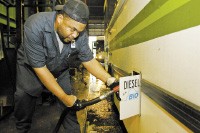 Justin Fox Burks
Justin Fox Burks  Justin Fox Burks
Justin Fox Burks 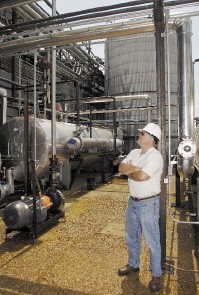 Justin Fox Burks
Justin Fox Burks 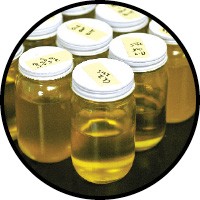 Justin Fox Burks
Justin Fox Burks  Justin Fox Burks
Justin Fox Burks 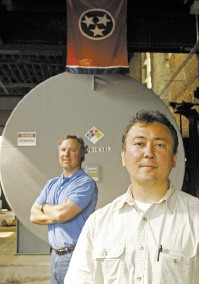 Justin Fox Burks
Justin Fox Burks 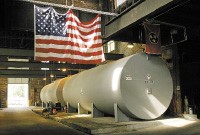 Justin Fox Burks
Justin Fox Burks 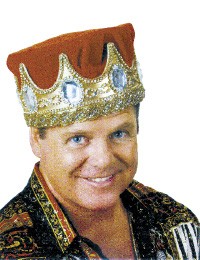
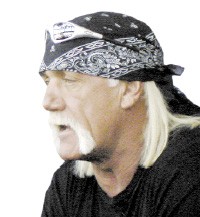
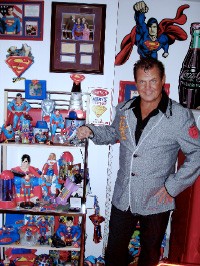 Chris Davis
Chris Davis  Justin Fox Burks
Justin Fox Burks  Justin Fox Burks
Justin Fox Burks  Justin Fox Burks
Justin Fox Burks 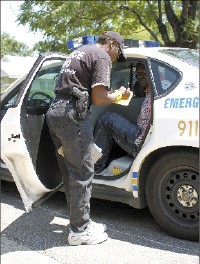 Susan Lowe
Susan Lowe